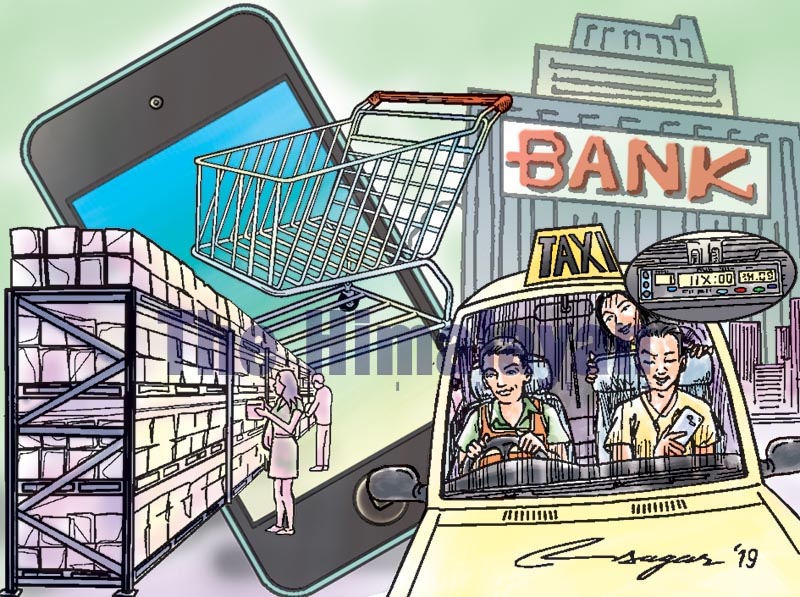Financial market development: Digital first: now or never
Certain things cannot be changed overnight. A greenfield approach is needed to tackle this, which is a way of revamping a system by introducing new technology while taking stock of past business models
The banking sector is saddled with petty interests, but there are growing voices for change. Technology dominates every business today. People are becoming techno-centric and demand advanced services. Digital first should be the cornerstone of financial services.
A tectonic shift towards digital banking is being seen. It is easy thanks to the mobile phone, but it has yet to touch a satisfactory level. It is, therefore, imperative to articulate a vision for the future that meets consumer expectation. Bankers are definitely not technologists. But they are given multiple avenues to adopt and implement new technology.
People seek convenience at every step. Booking a flight, going for a holiday, shopping online, topping up the mobile balance – they have all become easy, simple and seamless. That’s why a digital platform has become indispensable while keeping in mind its four pillars – omni-channel banking, smart banking, modular banking and open banking. Each pillar is vital to the success of future banking. Technology is often fraught with risks. Some risks stem from applying new things into the existing one while some are intrinsic. Well-structured risk management is instrumental in building a digital channel in the financial sector to reap the benefits of technology. This also enhances efficiency, saves time and, above all, reduces the risks of a digital entity. Customers are demanding by nature. They want immediate overhaul of the legacy system. In the 1990s, after Nabil Bank (the then Nepal Arab Bank) entered the market, clients witnessed drastic changes in the country’s banking regime. Businessmen were given a new taste of advanced banking.
Digital first is today’s demand. People often question why they don’t deserve new innovations? If someone wants to hire a taxi, why isn’t this possible through a banking transaction? Why hasn’t the banking system shown this level of presence?
Certain things cannot be changed overnight. A greenfield approach is needed to tackle this, which is a way of revamping a system by introducing new technology while considering the past business models. This approach closely examines the digitalised business model to learn lessons of what happened in the past in terms of business strategy and its success path. It means maintaining the same momentum of growth instilled by the tech upturn, breaking the sluggish cycle. Interestingly, it brings several benefits, such as increasing competitiveness, cyber risk reduction, if done correctly, and upward swing in sales.
Adapting to digital-only business can help meet consumer needs. The wide penetration of smartphones and wireless data among consumers has necessitated banks to adopt digital-only propositions. It requires changing the existing operating model of the banks to follow the change in the market. A new working environment with an agile and autonomous cross-functional digital team must be put in place for continuous and rapid innovation process. Ultimately, this is also the process of overhauling the current model of doing business.
Quite surprisingly, banks in Nepal have yet to plan for an integrated digital ecosystem. Consumers want seamless financial services with the help of a mobile app. Therefore, strategic planning to tap the market potential is essential. But what are they waiting for – the regulator’s next direction? Regulatory frameworks are bound to build or change as the market paves its way. No one can stop the way of the market, neither the government nor any authority.
Digital first is the widely-accepted notion to broaden the consumer base. Traditional banking services are required to go digital to reach a wide range of consumers. Innovative engines in digital finance need to be developed to nurture an overall digital regime. These responsibilities must be shouldered not only by the regulator but by all the stakeholders. FinTech (financial technologies) is the enabler of better regulatory insights, too. While the digital demand is well on its way, the challenges of regulation, interoperability and oversight are also mounting. FinTech would be a significant panacea to regulate these innovations to scale new heights of growth.
Yet another terminology is trending these days - leapfrogging. It rules out any intermediary steps in reshaping the poorly-developed technology or systems to turn into modern technology. This can also be developed while formulating a digital ecosystem. Mobile banking is the best way to leapfrogging. Poor economies where an unbanked population is high can go for leapfrogging by having wages directly deposited into their Smartphone gateway of banking. Leapfrog effects are, therefore, meant for those who are financially excluded.
Banks and financial institutions must embrace the growing demand, take risks and bring disruption in their existing ecosystem. Legacy thinking is obsolete, a new culture of digital habit must be developed. So the change should be to replace the old legacy with a new one. That means striking a balance between soaring growth and cutting the cost by applying mitigation techniques of emerging risks. The ultimate goal should, therefore, be to target the growing consumer ambitions as well as the potentials of delivering low-cost products - with seamless solutions.
Giri is deputy director at Nepal Rastra Bank






